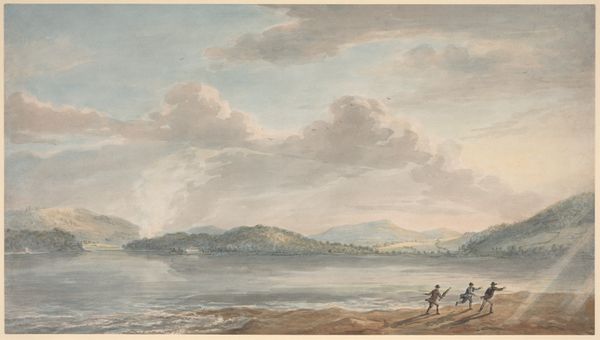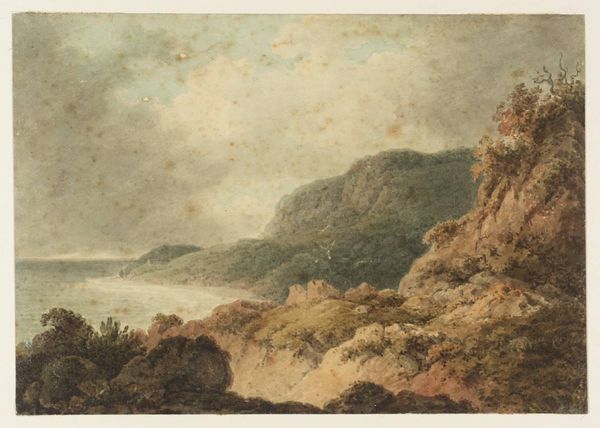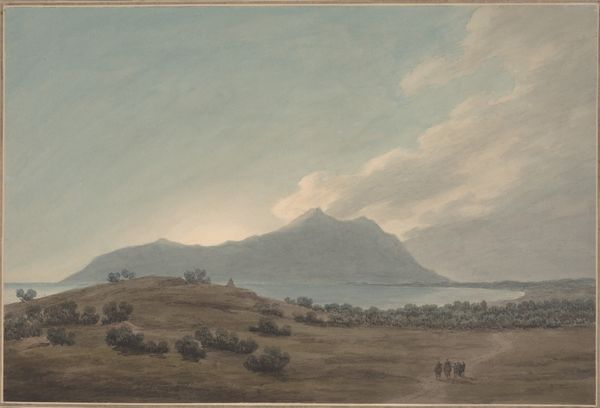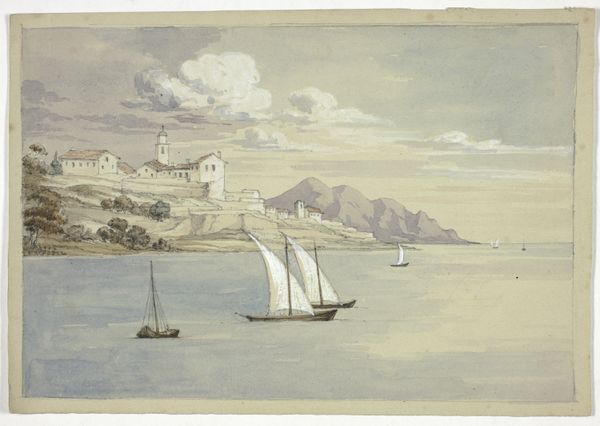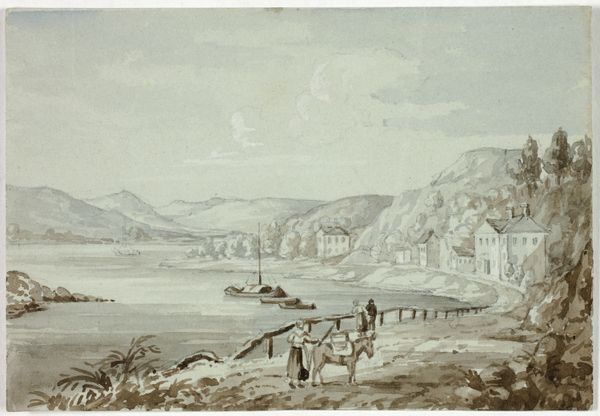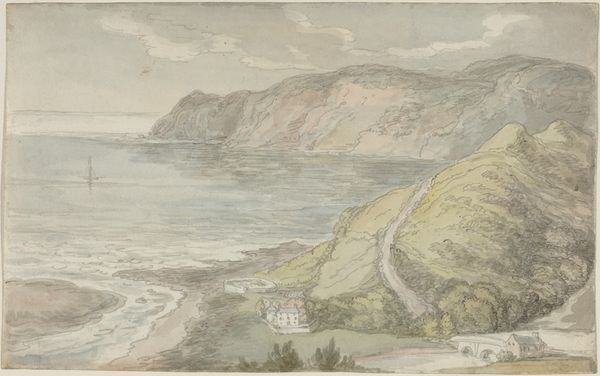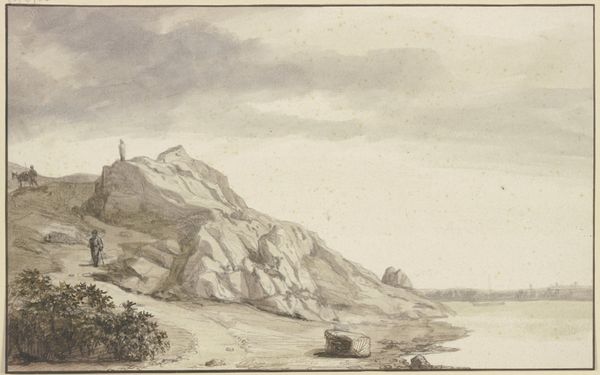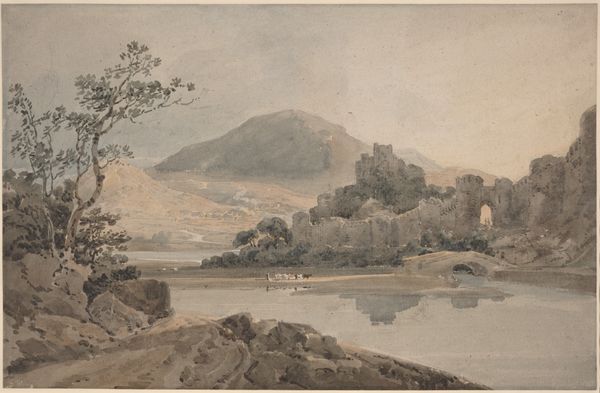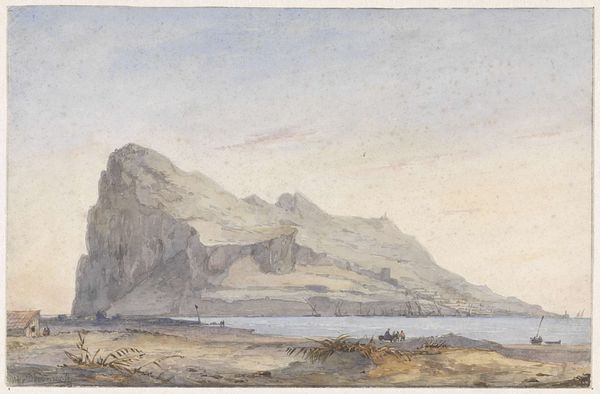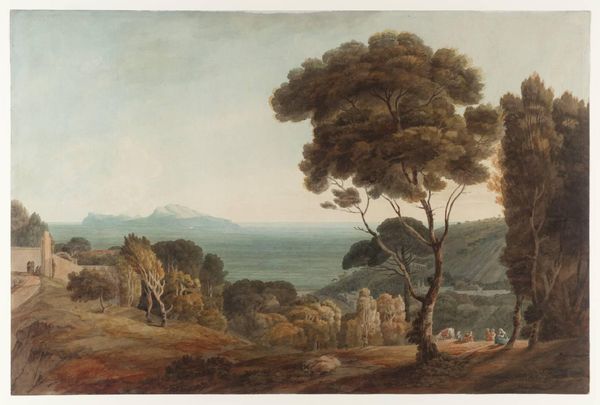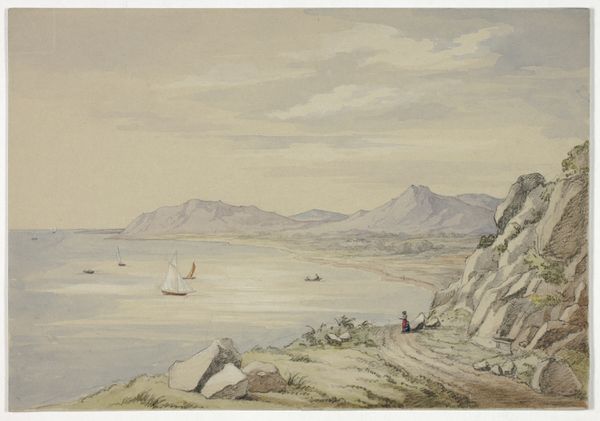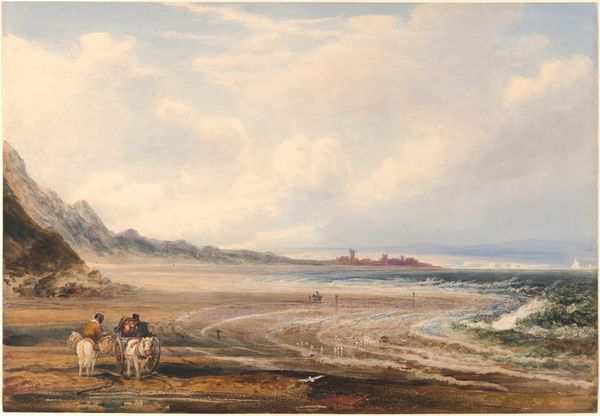
drawing, plein-air, watercolor
#
drawing
#
water colours
#
plein-air
#
landscape
#
watercolor
#
romanticism
#
cityscape
#
watercolor
Dimensions: sheet: 22.7 × 35.88 cm (8 15/16 × 14 1/8 in.)
Copyright: National Gallery of Art: CC0 1.0
Robert Walter Weir created this watercolor painting, Castle on a River, using watercolor on paper. What immediately strikes you is the way Weir has captured the scene's atmosphere through the medium itself. Watercolor is all about transparency and light; see how Weir uses thin washes of color to create a sense of depth and distance. This aligns with watercolor's traditional use for on-the-spot landscape sketches as opposed to the grander, more laboured medium of oil paint. Notice the layering of washes that allow the white of the paper to peek through, giving the painting a luminous quality. The application of the watercolour is done with clear intention, layering hues to depict spatial recession. The fluid nature of watercolor allows for a sense of immediacy and spontaneity. The way the colors blend and bleed together is indicative of the artist's ability to harness the unique qualities of this medium, which are often dismissed as unserious. The ease of portability associated with watercolours contributed to the rise of landscape painting and the availability of art materials and creative experiences, which helped to shape and influence the social context in which such artworks were produced. It’s through understanding these methods and materials that we can appreciate the artistry of Robert Walter Weir, and his contribution to the broader canon of landscape painting.
Comments
No comments
Be the first to comment and join the conversation on the ultimate creative platform.
